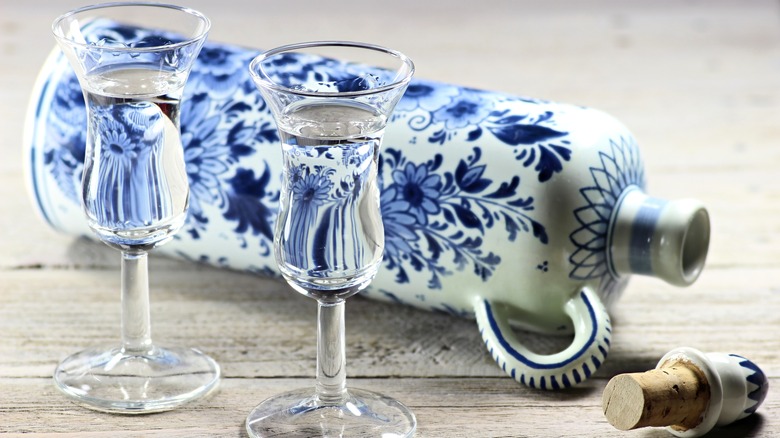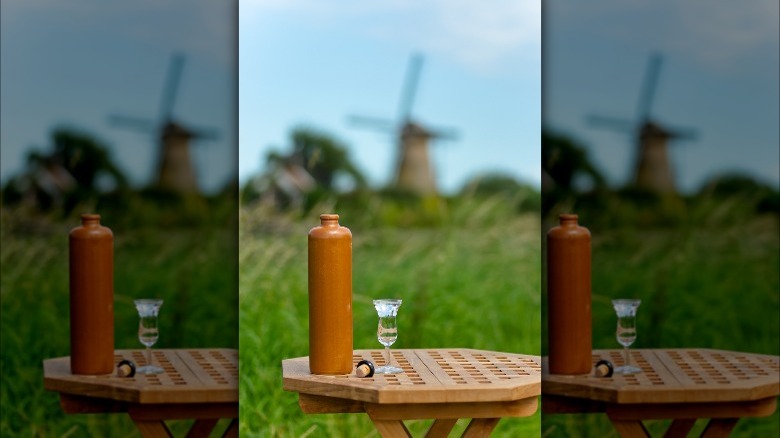Genever: The Dutch Liquor With A Unique Drinking Ritual
Colloquially referred to as Dutch Gin, genever (pronounced juh-nee-vuhr) is a unique spirit category with a rich history and a bold palette. If you've never had genever before, the easiest way to understand what it tastes like is to look at the ingredients. Unlike gin, genever is not a neutral grain spirit. Sharing a similar mash bill to bourbon, genever is most commonly made by distilling corn, rye, and malted barley. The difference is that genever must also contain gin's main flavor, juniper.
This halfway point between whiskey and gin is what makes genever so unique. It has the rich botanical flavors of gin and the mellow richness of unaged whiskey wrapped together. Why genever gets so much less attention relative to other spirit categories is something of a mystery but there are a few historical circumstances we can point to. Before we do, it's worth noting that genever is protected by an A.O.C. which means it can only be legally produced in The Netherlands, Belgium, and small sections of both France and Germany.
The Netherlands is the country most often associated with genever (likely because they were the ones who first introduced the drink to Britain), but Belgium was a powerhouse of genever production up until the 20th century. From 1919 until 1985, Belgium underwent a partial Prohibition which, combined with the destruction of both World Wars, effectively crippled the Belgian genever industry.
The little head-butt that gets you buzzed
That's not to say that genever is a relic of the past, though. You can still find plenty of Dutch drinkers participating in the drinking ritual known as Kopstootje which often gets translated as "little head-butt." The bartender takes a tulip-shaped shot glass and fills it to the brim with genever — so much so that picking it up would cause liquid to spill over the sides. With both hands clasped behind their back, the drinker bends over to take a sip off the top before they then pick it up and either shoot it or sip on it with a beer chaser in tow.
People who enjoy botanicals will often drink gin neat and genever is treated the same way, though the juniper flavor is milder than in gin. Genever was also a very popular cocktail ingredient in the early 20th century and has garnered new attention in recent years as mixologists have begun to look to the past for new inspiration.
The form of genever has changed as well. You'll regularly see genever labeled as jonge (young) or oude (old) to designate the style. Jonge genever more closely resembles gin as distillers use new distillation methods to achieve something closer to a neutral grain spirit. Oude genever retains the rustic charm of the old style, with more emphasis on the malt grains. Either style can be aged or unaged.

